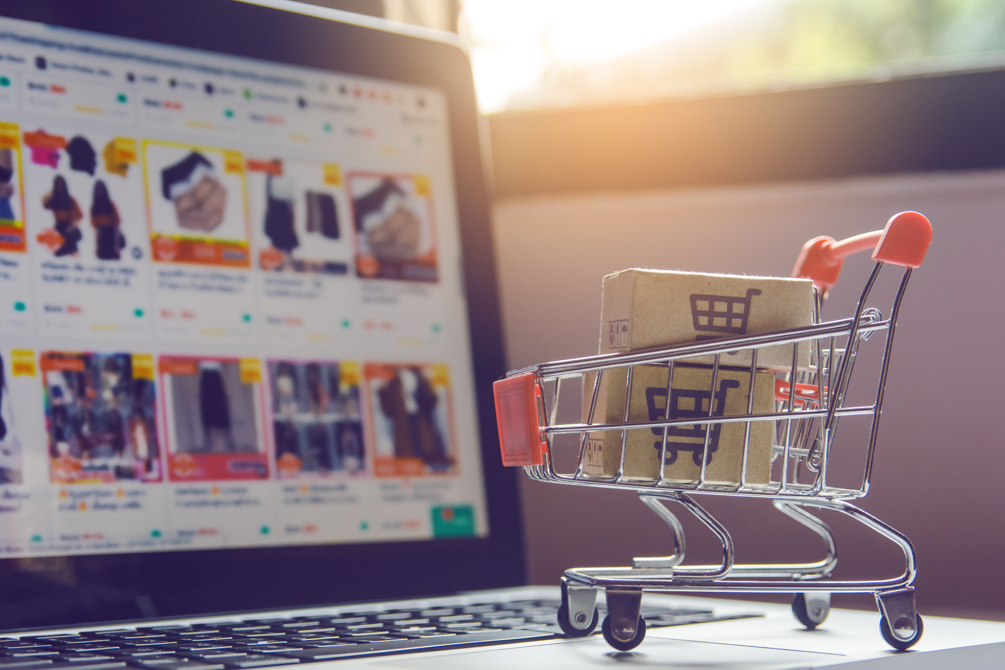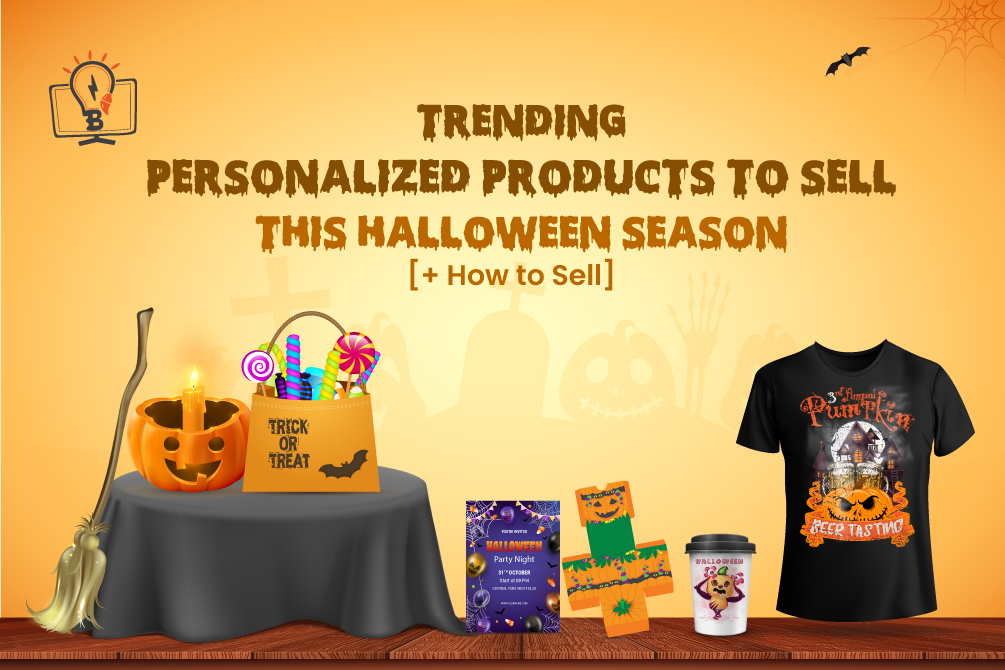2020’s advent events have changed the global online marketplace. Especially that of the eCommerce industry. With many retailers taking their physical business online and entrepreneurs starting their eCommerce ventures, everyone is lining up to claim their share of profit on the internet economy. ECommerce, online shopping, e-retail. Not a day passes by without hearing one of these buzzwords.
As a result, online retail sales amounted to 4.9 trillion U.S. dollars worldwide. And it’s forecast to grow by over 50% within the next four years. Research by NASDAQ also estimates that by the end of 2040, 95% of all purchases will be online through eCommerce. The online marketplace is revolutionizing the entire retail and trade scenario. Selling products online is of primary importance to retailers and entrepreneurs.
There are approximately 12-24 million eCommerce stores across the globe. Multiple stores keep adding to this list every day. That’s too much competition, right? On the contrary, only fewer (less than 1M) sites can sell more than $1,000/year. Ergo, there are plenty of opportunities to thrive. Online phenomenon expands a brand’s geographical reach and opens up a whole new pool of customers. But, if you do not implement it correctly, it can take your business southwards too.
So, if you want to find out how to sell more products online, you’ve come to the right place. In this guide, we’ll walk you through every step in the process of “How to sell products online?” After reading this you’ll be well-equipped and ready to take your first step on your eCommerce journey! Here’s our take on it.
- Know-How to Sell Products Online
- What Kind of Products to Sell Online?
- Sell More Products Online: Build a Website
- Sell Personalized Products Online: A Comprehensive Checklist
- How to Sell More Products Online: The Perfect Marketing Strategy
- Winding Up: Sell Products on The Website
1. Know-How to Sell Products Online
The ECommerce industry is living its golden age. It meets customers’ demands, almost instantly. Hence, plugging into this trend right now is the smartest way to start an online business. Selling online enables you to sell from anywhere at any time to anyone across the world.
Whether you’re vacationing alongside the beach, or backpacking to the countryside – you’re just a Wi-fi connection away from accessing your business. Hence, the first step would be knowing how to sell products online. Here are the three most popular ways:
I. Online Marketplaces: Amazon, Etsy, and eBay
Selling online on marketplaces like Amazon, Etsy and eBay is extremely popular these days. Did you know that Amazon and eBay alone recorded more than 1 Billion visit mark this year? Also, Amazon alone has a total of 6.3 million sellers registered worldwide. And with $6 out of every $10 spent on online shopping or influenced by online discovery, the growth of the eCommerce market is nowhere near declining.
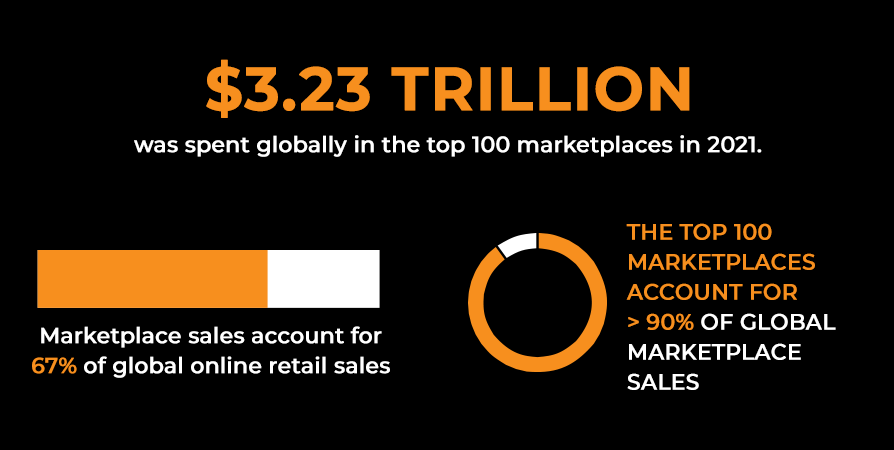
Thus, marketplaces like eBay and Amazon expose business owners to a massive number of potential customers. It is best suited for entrepreneurs who want to start selling quickly. Following are the details of the three most popular marketplaces.
Amazon
Amazon is a hugely popular site for selling online. You’ll be competing with some of the world’s biggest retailers. The biggest benefit of selling on Amazon is that you’re essentially borrowing its reputation. That can work wonders for your business.
Amazon is a one-stop-eCommerce-store for online sellers who are just getting started. Sellers can offer multiple delivery options. Amazon also stores and delivers goods for you. Their charges vary depending on what you’re selling and the quantities.
Etsy
Etsy is like a niche Amazon, which is generally used for selling arts and crafts. As a result of the niche use-case, the customer base is more focused. Etsy’s fees are a bit lower as compared to Amazon’s. But the listing and final sales fee can still eat your profits.
eBay
You can pretty much sell anything and everything you want on eBay. This means that it is difficult to build a brand or something unique out of it. eBay is an old-school marketplace, where buyers are not obliged to pay the cash instantly. Before deciding to sell on eBay make sure you’ve factored in the surprisingly high fees.
So, these were the three most prevalent marketplaces to sell online. The tricky part about these marketplaces is the competition. How will you stand out from the crowd? Online marketplaces look alike in many ways. Shoppers won’t buy from you if your store or website looks similar to that of your competitors. Therefore, you might need something unique and something that represents your brand identity in a personalized manner.
There are other problems as well. For example, the Amazon search algorithm keeps changing constantly. Hence there are chances that your products might be trending one day and might not be trending the next. Plus, there are always new competitors in the market. While we all understand that heavy discounts are good for nobody, many businesses still may undercut your price to win customers. After all, it is not easy to mark your brand in these marketplaces.

Marketplaces vs. your own eCommerce store
Hence, your primary goal must be creating a brand repo. Brand image is a valuable asset. A good brand gives trust to shoppers if you have the right E-Commerce strategy. Marketplaces can be a good option to start with. This is because you can start selling online with no support and minimal upfront cost. However, you should always keep exploring other ways to build your brand.
Do you want to create an eCommerce store that is tailored to the unique needs of your business and target audience?
II. Social Media Sites
Social media sites like Facebook and Instagram are popular mediums to practice target-based sales. Facebook is the biggest social media platform in the world, with nearly 2.96 billion active users. You need to create a business page on Facebook to start selling your products. You should keep certain things in mind before beginning.
More users on Facebook means more active posts. Hence, it becomes difficult to mark your presence without posting actively on Facebook. You must focus on posting engaging content that catches the customer’s attention immediately. You can share the latest trends and updates on your niche, you can use the Facebook professional tools to run promos and improve engagement. You can offer exclusive discounts in exchange for a ‘like’ or ‘follow’ on your page too.
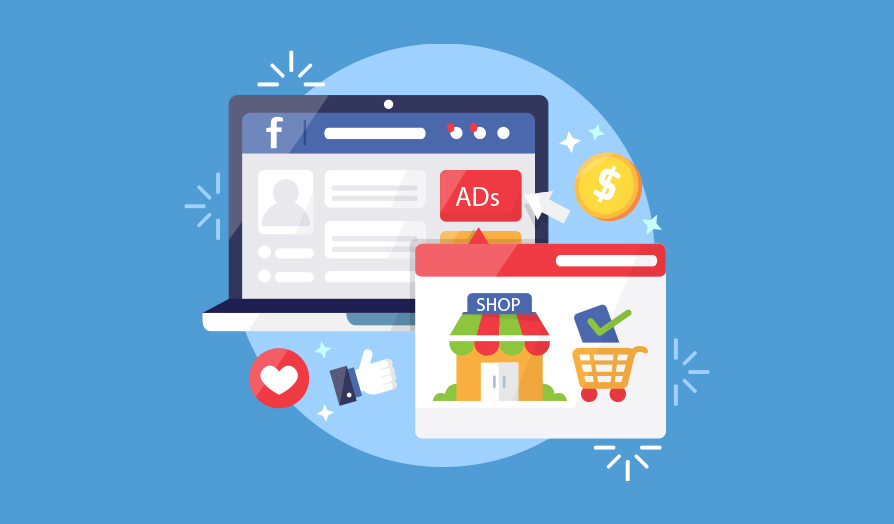
You also must use high-quality images. Shoddy or blurry pictures do not get much engagement. Experiment with different timings, find out when your target audience is the most active on the internet, and post accordingly.
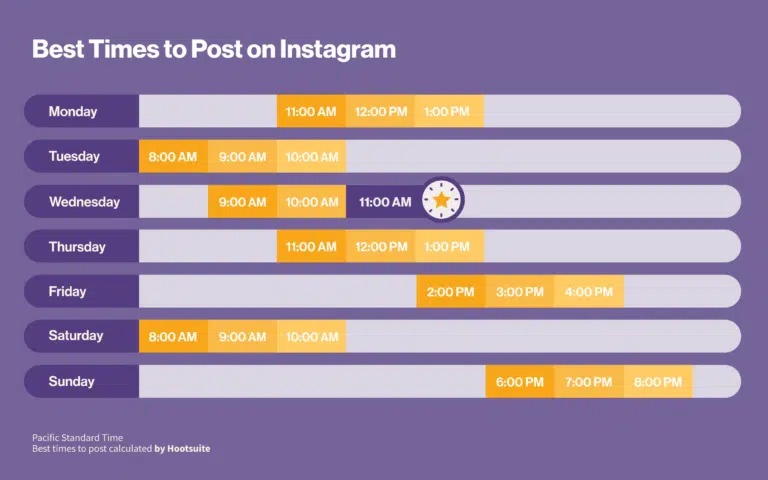
One problem with Facebook is that you will have to manage orders manually. It can be time-consuming. So, it is better not to use Facebook exclusively. However, what you can do is integrate with your eCommerce website. This will enable you to manage all your orders and inventory from one place. Let’s have a look at some of the eCommerce websites.
III. Ecommerce Store with Platforms
Setting up an eCommerce website is the perfect solution if you want people to come and view only your products as opposed to marketplaces like Amazon and eBay.
Selecting the right e-commerce platform is a crucial step. Since we are looking for a specific use-case to sell products on the website, there’s a pool of options to choose from. You can make decisions based on various categories such as licensing, cost of development, customization, and so on.
Magento is the most trending choice for larger enterprises. It is perfect for someone who needs flexible customization. Shopify and WooCommerce on the contrary are hassle-free to start with. You can easily integrate your Shopify and WooCommerce store to your website and get started quickly. Each platform has its pros and cons and we will have an in-depth analysis for the same in the later sections.
You can go with self-hosted platforms like Magento and WooCommerce. You can also opt for hosted platforms like Shopify and Big commerce. These platforms are usually very easy to use, even for beginners.
Opting for self-hosted platforms gives you far more scope for customization. It allows you, have full control of the look and feel of your online shop front. You can also build a unique brand out of your website by designing it as you want. The only downside is that if you don’t know how to code this may get difficult to manage and understand. But you can always take help! We can help you set up your eCommerce store and website within a minimum time with our Web to Print Storefront.
2. What Kind of Products to Sell Online?
This question is a critical one. You can create an attractive eCommerce store, fill it with catchy, engaging content, provide excellent customer service, and build a unique brand identity, but if no one wants to buy what you’re selling, you’re not going to do well.
“Don’t find customers for your products, find products for your customers.”
Hence, if you want to sell products on the website, selecting the right products is critical. Worry not, because we are going to tell you everything about what and how to sell products on the website. Here are some tips on how to make sure that you’re giving your customers the best chance to fly off the virtual shelves.
I. Analytics Tools
Everyone wishes they could predict the next big thing’. Imagine knowing the trends and best-selling products of the future. Of course, there is no simple way of predicting this. But here are some tools that might help.
Google Trends
Google trends is a great way to find out about the rising popularity of products. It asks you to enter certain search terms and then analyzes results based on the popularity of those terms on google. For example, let’s say you want to sell a certain niche book online but are not sure whether to sell fiction, non-fiction, literature, and so on. You can enter all three in the search words and see which one is growing in popularity.
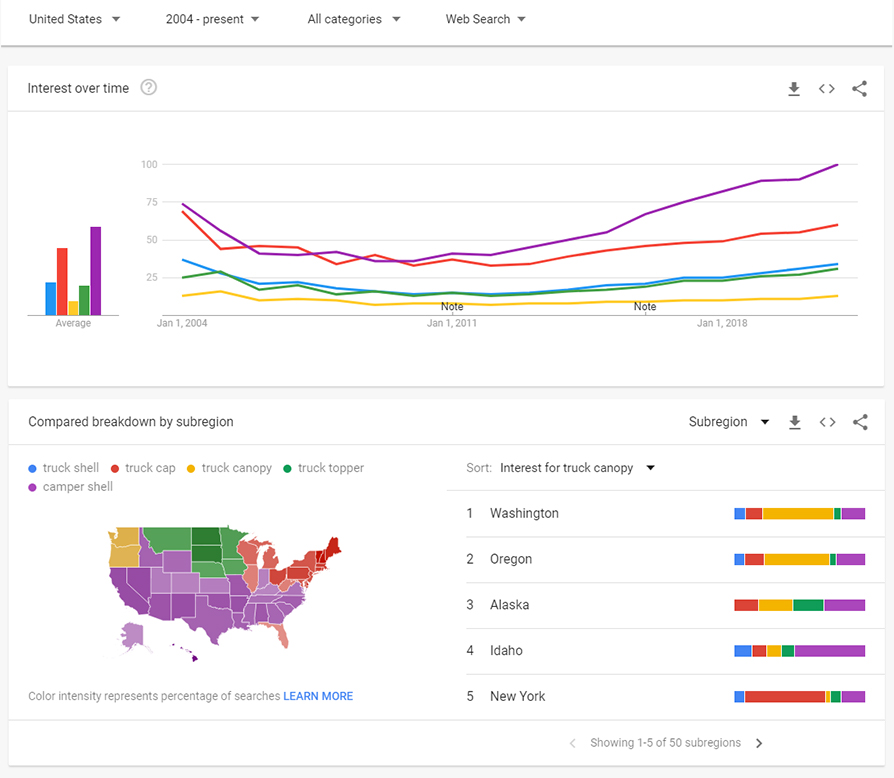
Google trends also shows terminology differences between regions. You can view location based data
It also allows you to set the location where you expect your customers, and off you go! You can also be aware of the spikes and lows in the sales. For example, if certain books are popular in the time of December, before vacation, you might want to increase your marketing accordingly in that month.
Google Ads Planner
Once you know what you’re selling you can do the google keyword analysis to find out how many people search for that product. Check out the monthly popularity of that particular product and see how competitive the keywords are. You can also find out how many other businesses are selling similar products.
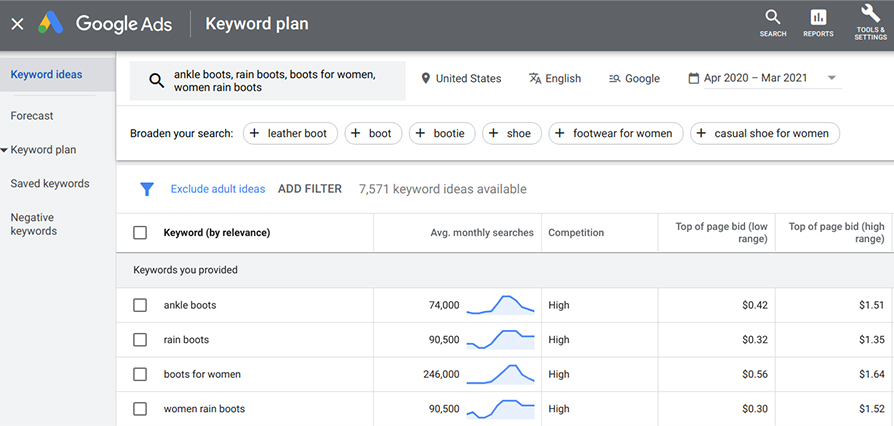
We recommend you avoid selling any product that has monthly searches of less than 300. You want to earn money from your sales, online right? So why advertise a product for which there’s no demand?
II. Choose Types of Products
The next step would be choosing the type of products. You can either buy the products, label them and sell them or make them yourself. Let’s have a brief look at both.
Readymade Products
One thing that you need to make sure of is that the products you’re selling must be unique. The best way to build a brand out of ready-made products is a unique selling proposition. It is the foundation for an effective customer retention strategy. It is the most basic element, yet most brands often overlook it. This is the reason why so many products go unnoticed despite the perfect marketing push. You want your product to stand out? USP is the answer!

USPs offer a clear benefit. If you have a well-defined USP, your target audience will learn to appreciate it for that particular aspect. Otherwise, that customer base will simply go for other options that offer the lowest price, regardless of all the product benefits you offer. A ‘killer’ USP communicates to the audience in a way that makes your brand image better and more special than the rest. And why would someone not prefer to buy such a product?
Examples of Effective USPs
- Domino’s Pizza – “You get fresh, hot pizza delivered to your door in 30 minutes or less, or it’s free.”
- DeBeers – “A diamond is forever.”
- Colgate – “Improve mouth health in two weeks”
- Zappos – “The best return policy ever. A return policy that removes the fear of buying online and buying shoes that might not fit.”
- Head & Shoulders – “Clinically proven to reduce dandruff.”
- M&Ms – “The milk chocolate melts in your mouth, not in your hand
You must formulate your acquisition policies that revolve around your product’s USP rather than just based on quantity or discounts. Another option is selling customized products. Customized products are one of the most flourishing USPs that immediately catches the customer’s eye.
Customized Products
Customized products are the best way to sell more products on the website. Selling customized products online creates a unique experience for customers and brings them back to your store every time they want something new.
Enable your customers to design their products visually, and benefit by selling more products on your website. It can transform your brand’s ethos into tangible items that your customers can see, feel and eventually design before they make a purchase.
The idea that they can design the product however they want, makes the product instantly shareable on social media. Ergo, free social publicity! You can get all this, for very little or no additional cost. When your customers carry your products around the world with them, they evolve into brand ambassadors. This in turn increases the visibility of your products.

Hence, you can easily reach a wider audience, increase customer loyalty, and get wide-reaching advertising. There’s another mixed approach to it too. You can sell ready-made products as well as customized products. You can offer customization on your ready-made products as well. Providing as many options as possible never detriments a business.
So, if you’re thinking of adopting a product customization tool, here’s a perfect suggestion – Check PrintXpand’ fully-flexible online product design tool. It understands your business feasibility and provides a custom UI for you to control where your end-users can customize.
III. Product Sourcing
Once you’ve decided the kind of products you are going to sell, the next step is to think about product sourcing. Even if you’re offering customized products you will need to get the raw materials from a wholesaler or a manufacturer. Here are some tips to move forward with the decision.
Acquire Goods from Wholesaler/Manufacturers
Whether you sell ready-made products or customized, you will need to decide on the wholesaler or a manufacturer. You will then need to brand those products with your label and mark them up. The investment costs include buying the product, storing it in a warehouse, upkeeping, shipping, and customization (in case you’re offering one). Make sure you choose a reliable and highly-rated supplier. It’ll be extremely easy for you if you decide to scale up.
Make the Products Yourself
You can opt for creating your product. Usually, people who sell jewelry, artisans, and crafted items create their products. The main investment costs include the raw materials and time. Making your products and selling those products on the website can work out great for building a personalized brand. It also gives you great freedom to control the stock and pricing.
Sourcing Products from Drop shippers
This is an increasingly popular way to sell products on the website. It enables you to fulfill the orders without stocking or handling the product yourself. All you need to do is list products available from a drop shipper. The customer places their order in your store and pays you. The order is passed onto the dropship supplier, who delivers the product directly to the customer.
3. Building a Website
Whether you’re expanding your physical store, or just starting your business from scratch, selecting the right e-commerce platform is crucial to selling customized products online. It has a huge impact on the profitability and stability of your business.
The only alternatives to an eCommerce platform are building a website from scratch, which can get way too expensive. Hence building your website on eCommerce platforms is the best solution. It complies with all your business needs: it gives you a unique brand, a USP and you can easily stand out from the crowd.
You can also use various plug-in software. But we don’t consider it an ideal choice to go with. Especially if you’re looking to build and grow a legitimate business. Here’s a features checklist that every business owner must think about before selecting an eCommerce platform.
- Hosting environment, Domain name, YOY uptime, bandwidth, and API call volumes.
- Flexible website builder with user-friendly themes in non-proprietary languages.
- See if it offers you an extensive application marketplace with pre-built integrations.
- It must offer a mobile-responsive interface and easy checkout. It also must be fully customizable.
- The platform must have various search engine optimization (SEO) features and fully customizable URLs.
- It must provide built-in eCommerce functionality features such as promotions and discounts, analytics, catalog management, editing tools, etc.
Here is a five-step checklist consideration before selecting a platform to sell personalized products online.
- BudgetEven though eCommerce hosts offer competitive packages, you should be able to decide if they’re cost-efficient or not. Do not fall for the cheapest option or take the most expensive way to go. Decide a proper budget on web designing, UI, UX, programming, security, maintenance, monthly hosting charges, licensing, and so on.
- Target AudienceIf you want to capture and engage your audience, advertising to social media users is a must. So, look into the platform’s marketing features. Facebook boasts more than 2.7 billion active users every month. That’s a lot of potential customers. See if the platform you’re selecting offers integration with multiple social media platforms.
- Number of Products You Want to SellThis is an important aspect to consider before selecting a platform to sell personalized products online. If you’re offering a wide range of products then you may need to choose a platform with high SKU limits.
- Room for GrowthTo sell your personalized products online it is important to select a platform that grows with you. You will be scaling up your business at some point of time in the future. Think about the kind of traffic you expect on your site. For those who’re just starting their business, they might need a platform with high-traffic capabilities. So, pick a platform that can handle the traffic demands now and in the future.
- Customer ServiceAssistance is the least considered but the most important part while choosing a platform to sell personalized products online. Choose a platform that has wide customer support or a wide community of users where you can solve all your queries.
Let us now analyze the various available platforms and find out which one will best suit your business. Here’s a quick comparison table for you:
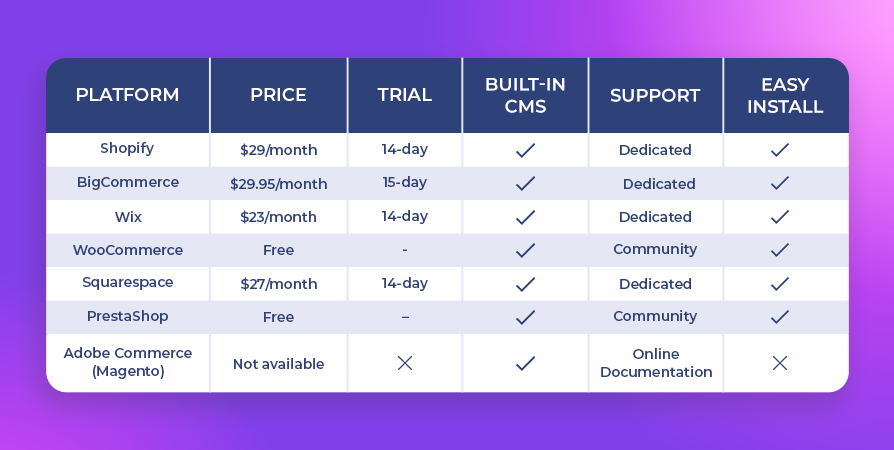
I. Sell Personalized Products with WooCommerce Design Tool
WooCommerce is an open-source platform. Along with the brand’s content on WordPress, it offers a cart solution. It is popular amongst small to medium businesses for its simplicity to install and customize. It is often used by entrepreneurs just starting their businesses, or bloggers expanding into eCommerce.
It has a huge community of developers spread globally. It provides you with multiple themes, plug-ins, and support. It gives the most control to the user as compared to any other platforms out there. It allows maximum scalability and personalization. It is also the most used ecommerce platform, with an astonishing 38.57% market share across all eCommerce solutions.
On the flip side, it is important to note that WordPress and WooCommerce are free to use. However, you will have to pay a hefty price for the hosting, domain, e-mails, plugins, and extensions.
II. Shopify Product Customizer for Selling Personalized Products Online
Shopify, a Canadian e-commerce giant is a SaaS-based eCommerce platform. They are popular among stores, and brands with SKU counts of less than 100. It also works well with Shopify product customizers.
It is suitable for both small to large-scale companies. You can integrate your website into the store. On the contrary, it has limitations when it comes to customization. But we would recommend you to check out the prices, as they’re significantly higher. Especially for companies with high volume sales. Hence, it might not be best suited for companies looking for out-of-the-box solutions.
III. Magento Design Tool: Sell Customized Products Online Without any Limitations
Magento is an open-source, self-hosted eCommerce platform. It is free to download but requires a hosting platform.
The Magento enterprise version is one of the most expensive options as compared to the other two. But the community version is available for free. But once you choose Magento you can develop it further to build your brand. You might need to hire developers to customize it.
Irrespective of the challenges, it is one of the renowned e-commerce platforms out there and accounts for about 250,000 active web stores, making it the third-most-popular e-commerce platform globally. It is customizable up to a great extent and there is a large community of developers out there for support. Hence, make no haste while taking a decision.
Selecting the correct platform for your business will not only require technical expertise, but it’ll also take up a lot of time and money. Silver lining is we can help you build the most unique website out there. We are web-to-print solution service providers and we can help you build the perfect website to sell personalized products online.
4. Sell Personalized Products Online: A Comprehensive Checklist
So, you’ve also selected the platform to sell customized products online. After deciding what products to sell and how to source them, now is the time to sell them!
As important as it is, selling customized products online is a tricky task in itself. Think about it yourself. Imagine a restaurant, whose menu is poorly written and the pictures on the billboards outside look revolting. No matter how tasty the food is, will you buy it? The same goes for selling customized products online. You need a fool-proof plan to sell personalized products online.
I. Product Selling Strategy: Market Research
The ease of quick access and visibility through the internet has amplified the print business’s competition exponentially. You are no longer competing with just a few local businesses. You’ve got to worry about the global brands as well.
Especially in the print personalization business. As of 2022, the global printing market grew from $311.53 billion in 2021 to $328.38 billion at a compound annual growth rate (CAGR) of 5.4%. Despite the shift to digital alternatives in the USA, commercial printing is going strong with a $79.7 billion market value. The global commercial printing market is forecasted to be worth USD 484.22 billion by 2027, reporting a CAGR of 1.74% from 2022 to 2027.
Hence, keeping a constant check on your competitors is a must. Countless factors influence your sales. Your competition plays a huge role in the success of your business. That is why it is important to take proper steps to gain a competitive advantage by constantly performing market research and learning from your competitors.
II. Product Pricing Strategies
Pricing your products is one of the cornerstone decisions while answering the question of how to sell customized products online. It impacts all the aspects of your business. Pricing is the deciding factor for everything from your monetary in-flow, rankings among your competitors, profit, and many more.
Along with pricing strategies you also need to think about whether you’re offering a discount or not. Planning this can be intimidating. This is why most entrepreneurs find themselves stuck in the dilemma of pricing.

Many times, their launch dates get delayed due to this dilemma. But you can only formulate and attain the best pricing strategies by testing them with real customers. Start with pricing that would work and that covers all the costs.
Once you do this, add your profit margin and you’re good to go. Scout the internet for information and look to find the right way to come up with a price for your products rather than just guessing. Here’s a detailed guide that might help you price and sell customized products online.
III. Profit Margin
So, now you have all the information, a pricing strategy, and everything in place. The last thing to add will be adding your profit margin. You can adjust your profit to match your competitors.
Ensure that your price still falls within the range of the overall acceptable price for that particular product. It can get challenging for you if your prices are twice as high as your competitors. Also, make sure that you do not put the profit margin too low so that the overall price goes lower. Your profit margin should cover the extended hours of labor and other costs.
You can try out multiple pricing strategies by trial and error too. Once you add the profit margin, you have your final retail price with you!
IV. Product Images
Every business claims to have the best product in the market. But it is important to note the how to scrape products from ecommerce websites customers do not get a direct touch and feel of your products. They simply judge your products by looking at the pictures. How will you sell products on the website, if your images don’t do them justice?
The good part is you do not need a professional photographer. Take care of a few minor technicalities and you’re set to rule the market! Just follow these general rules.
- Use high-quality images, Always! Even if it is a little bit blurry, you will lose customers.
- Decide on universal image dimensions and use it every time, for all your products.
- You can use multiple tools to resize the width and height of images.
- Try to provide a 360-degree view of your products. The more views you provide, the more comfortable customers will feel buying it.
- Make sure each product variant has its image. For example, if you’re offering t-shirts in multiple colors, make sure you include images of t-shirts of all the colors.
- Whenever possible, try including photos of in-use products to provide context to your customers.
- If you’re offering customization then make sure your customers know all the design areas. Follow all these golden rules and you’re all set to sell customized products online.
Are you looking for an intuitive tool that makes customization a breeze for your customers and helps you deliver an effortless customization experience?
V. Product Descriptions
Next comes product descriptions. The words you add to your store, are not just product descriptions, it is much more than that. Great product descriptions attract a large number of customers.

When it comes to product descriptions, SEO can work wonders. While writing the product descriptions search engine optimization must be one of your top considerations. Using SEO techniques is a popular way to increase traffic to your store through organic search results. With Google Trends API you can get unlimited access to vast volumes of data from Google Trends that tells you what keywords people use when searching for products they want to buy. SEO helps you rank your products based on the search keywords. Hence, your descriptions must include keywords – popular words your customers are looking up.
Example
If you’re selling all types of Halloween costumes. Your description might look like this: “Spooky Halloween Costumes available. Distinctive styles of dresses and cosmetics available. We’ve got costumes available in all sizes and colors.”
Here are some pointers to take care of while writing product descriptions.
- Don’t simply copy and paste the manufacturer’s description. Duplicate content automatically reduces the ranking of your site.
- Highlight the features. For example, don’t just say that you have Halloween costumes available. Explain how it’s going to help your customer look the spookiest and stand-out at a Halloween party. Mention the advantage of buying from you.
- Make it original and less robotic. Avoid the use of cliche words like “game-changer” or “must-have”.
- Don’t vary your style. Again, you’ll need to fix a universal tone for all your product descriptions.
- Add social proof. Add the reviews of the customers who’ve already used your products.
- Do not mis-sell your products. Do not lie in the descriptions. Keep it genuine.
- Last but not the least, when you’re writing a product description, try not to sell a product. Try selling a story instead. Be as creative and innovative as possible.
VI. Shipping, Warehousing, and Logistics
You need to set up a universal delivery method for your products. You need to come up with a plan to charge accordingly for delivery, storage, payment-gateway charges, cash-on-delivery charges, taxes, and so on.
Charging for storage is one of the things you should do mindfully. Maybe you’re starting with a small garage which is sufficient as of now. But what if your customer demands grow? If the demand increases suddenly, it might become impossible for you to deliver timely and increase the supply all of a sudden. Hence, keep an eye on your product demand and warehousing prices. Both should be proportional and in-sync.
Most entrepreneurs follow the fundamental concept of price per shipment. A great way to win customers is to provide the shipping of various items at the same cost. You can also divide the supply shipping and logistics cost by the number of items in your order and calculate the shipping cost per product.
VII. USP + Customization
We discussed earlier how important a USP is for most businesses to stand out. And we also saw the importance of selling customized products. But what if we tell you, that you can do both at once? What if customized products can be your unique selling proposition? Yes, absolutely. Don’t believe us? Keep reading.
In a recent study, it was found that 1 out of every 5 customers is willing to pay 20% more for a personalized product exclusively made for them. Another study on creating customer loyalty through customization states that:
“Customization increases perceived service quality, customer satisfaction, customer trust, and ultimately builds brand loyalty as customers find these products unique in its offerings.”
Believe us now? Customers love things made just for them and selling customized products online is the best way to provide exactly what the customers want. Selling personalized products online keeps customers engaged with your brand for a long time and turns lucrative for you.
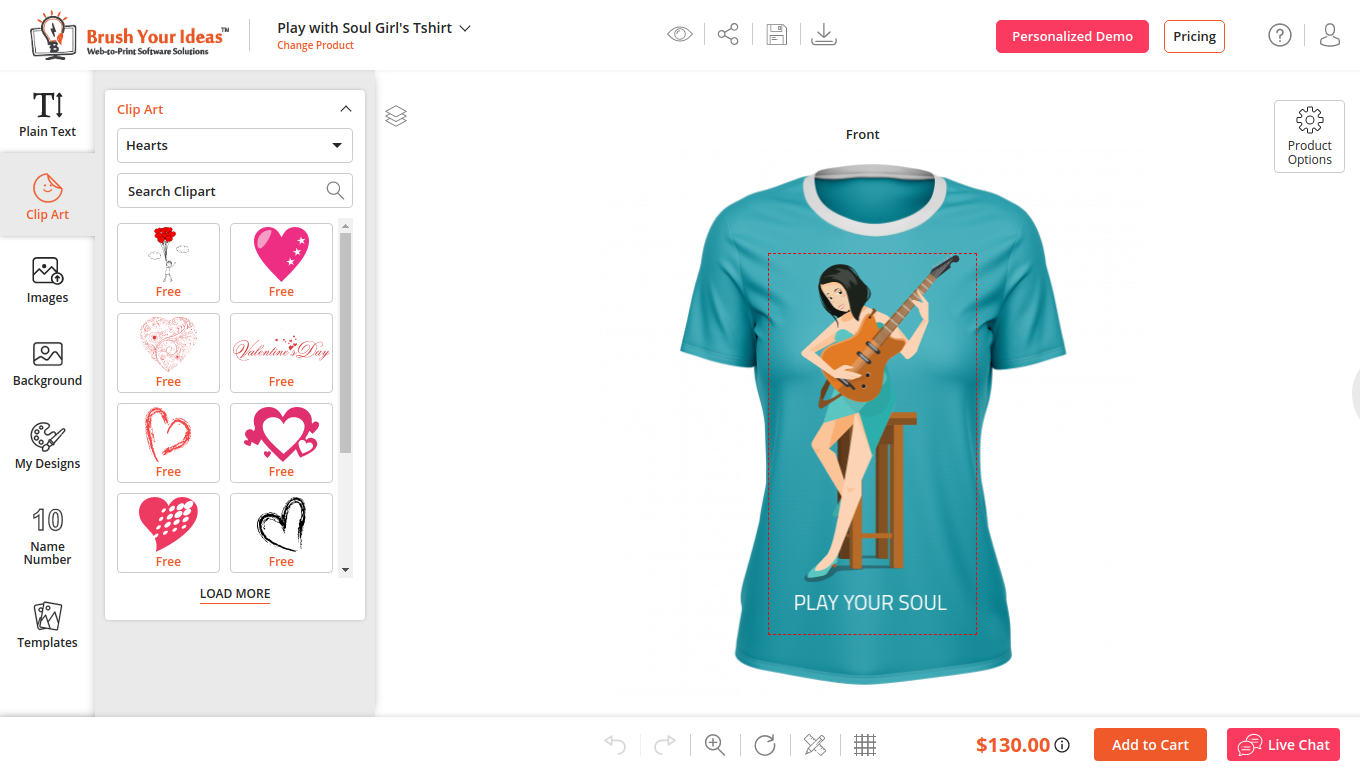
Customer experience finds value through exclusivity in the form of customized products. It gives them the feeling of something unique and gives them something specific that works just the way they want. So, offer your customers multiple personalization options, let them upload photographs, write personal messages, add designs of their choice to their products, and so on.
To sell personalized products online, you’ll need a flexible and unique product personalization tool. It must let you offer diverse features to your customers to create customized designs. We can help you offer customization and sell personalized products online.
PrintXpand provides an Intuitive W2P product design tool that offers everything from diverse customization features to print-ready designs. It comes with a massive library of images, texts, clipart, and ready templates. It is a fully-responsive designer tool and is also perfect to create personalized designs on every printable material. Plus, it offers multiple integrations and can work with multiple platforms.
Explore PrintXpand Customization Software for Magento, WooCommerce, OpenCart, Shopify, PrestaShop, PHP, and more.
5. How to Sell Customized Products Online: Here’s the Perfect Marketing Strategy
This last step closes the series. The perfect marketing strategy! Now that you’re ready with your online store and customization tools, it’s time to attract customers. This is the jazzy bit of learning how to sell products on the website.
We’ll introduce you to some of the most effective customer-winning tricks to market your store. These tricks are easy to implement and cost-efficient too. If you’re new in the line of selling online, you may want to avoid wasting your capital on expensive online ads.
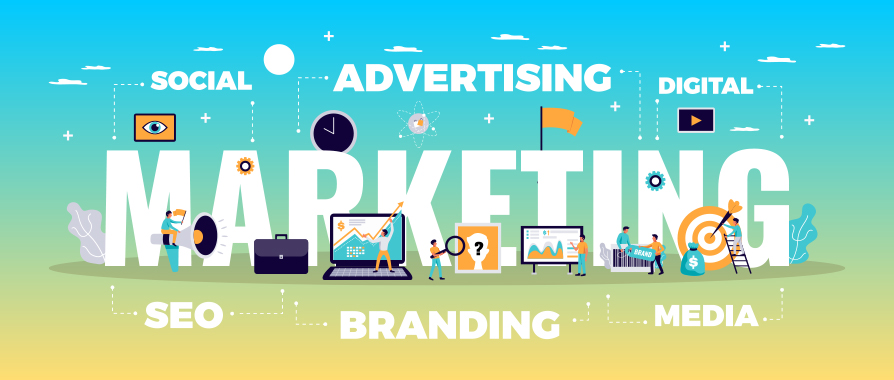
The very basic first step would be to think as a customer would think. Think where you would go if you want to buy certain products. Would you go to social media or would you simply google search it? The more generalized answers you can cover, the more chances you have at making sales. Let’s explore these techniques.
I. Social Media
Social media is one of the biggest weapons in the marketing arsenal. Social media gives you access to billions of potential customers at your fingertips. Social media allows you to post timely promotions, run ads, increase your reach, and practice target-audience-based marketing.
We would recommend you to use Facebook as it provides the most comprehensive ways of selling online. You can also go with Instagram. You can build an Instagram page to showcase all your products and then connect it to your Facebook business page to lure customers.
II. Content Marketing
Content marketing is important. It works in building loyalty, generating relevant leads, and building the brand image. It has become a new normal in terms of consumer expectations. It helps businesses to evolve what customers expect from brands. Here are two important aspects of content marketing:
SEO
In the earlier sections of this article, we found out that SEO is an important part of product descriptions. Other than the product descriptions you can promote your content by uploading blog posts too. Regularly posting SEO-friendly blogs can help you rank your website higher in Google. So SEO Writing is a critical component of your website growth.
You have the best chance of attracting your target customers by ranking your website high for your relevant search terms. But make sure you upload relevant content. You must not lose context. Post content that directly relates to your product.
Blogging
Blogging is a great way to boost your website’s SEO. Blogging can help you tell a story to your customers and interact with them on another level while selling your brand.
For example, if you’re into selling t-shirts. You can write a fun blog post on “Latest T-shirt trends in 2021”. A culmination of well-calculated SEO and good ideas are surely going to increase your digital footprints. And boom – you’re in business!
Regularly posting things about the industry you’re working in positions you as a thought leader and expert too. All you need to do is just add a blog page to your online store builder route.
III. Email Marketing
Email marketing is a way to connect with your customers personally. It can provide the most individual shopping experience to the customers. Having an email box is a must. Make sure your store is integrated with one.
Besides that, collect emails of every customer that buys from you. This allows you to gently retarget them with your new offerings. Before started your email campaigns run a DMARC report analyzer to make sure your email security is on point. Email marketing may take a bit of time to manage and run properly. So, if you’re new to the business started with blogging, SEO, and even social media first.
Winding Up: Sell Products on The Website
So, this was all about how to sell products on the website. In this guide, we introduced you to some of the most popular and effective ways to sell customized products online. If you follow every step of this guide, your business growth is guaranteed to be lucrative. You can increase both your capabilities and offerings simply by following the tips listed above.
We hope that we were able to cover all the questions from “how to sell products on the website” to “how to frame the correct marketing strategies”. We talked about selling via multiple eCommerce platforms, pricing strategies, research strategies, what kind of products to sell online, shipping and logistics methods, marketing methods, and last but not the least, product customization and its know-how.
PrintXpand aims at developing solutions that benefit our customers and the world. We are a web-to-print solutions provider specializing in products like product customization software, Inventory management tools, ERP software solutions, and many more. In due course of 16+ years, we have touched the lives of 70+ clients worldwide in the web-to-print space. Our goal is to provide web-to-print products that are efficient, easy to manage, and lite on the pocket. We are experts in niche-based strategizing of products in the e-commerce marketplace. If you need any help in building strategies to sell personalized products online, marketing and monetizing strategies, product strategies, and so on, we’re just a click away.
All product and company names are trademarks™, registered® or copyright© trademarks of their respective holders. Use of them does not imply any affiliation with or endorsement by them.
